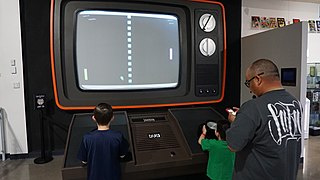
Famitsu, formerly Famicom Tsūshin, is a line of Japanese video game magazines published by Enterbrain, Inc. and Tokuma. Famitsu is published in both weekly and monthly formats as well as in the form of special topical issues devoted to only one console, video game company, or other theme. Shūkan Famitsū, the original Famitsū publication, is considered the most widely read and respected video game news magazine in Japan. From October 28, 2011 Enterbrain began releasing the digital version of the magazine exclusively on BookWalker weekly.
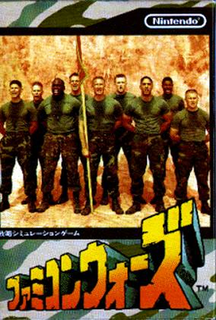
Famicom Wars is a wargame produced by Nintendo. It was released on August 12, 1988 for the Family Computer in Japan. It was later re-released on Virtual Console. It is the first game in the Wars series.

TV Champion (TVチャンピオン) is a Game Boy game based on the game show of the same name, broadcast on TV Tokyo. It includes support for the Super Game Boy, and was released only in Japan.

Tekken (鉄拳) is a fighting video game developed and published by Namco. It was released in arcades in December 1994 and on the PlayStation in 1995. It was the first entry in the popular Tekken series, succeeded by Tekken 2 in August 1995. The arcade game features eight playable characters, while the PlayStation version features 17 playable characters in the roster.

Cyber Knight is a science fiction Super Famicom and PC Engine role-playing video game that combines sci-fi space exploration with strategic robot combat. This game is intended for experienced role-playing gamers only. The random encounters are high even for a Japanese role-playing game with a mid-to-late 1992 Super Famicom release date and the combat sequences are extremely slow. The game was only released commercially in Japan, however there are a fan-translation from Japanese to English made by Aeon Genesis. Two years later, a sequel was released for this game titled Cyber Knight II: Chikyū Teikoku no Yabō.
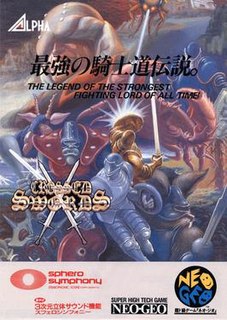
Crossed Swords is a hack & slash action RPG arcade game developed by Alpha Denshi and published by SNK for the Neo Geo arcade system in 1990 and Neo Geo console in 1991. Its gameplay was similar to SNK's earlier 1990 first-person shooter and beat 'em up game, The Super Spy, but with role-playing game elements and hack & slash combat instead of shooting and fist-fighting.

The Datach or Datach Joint ROM System, is an aftermarket enhancement accessory by Bandai for the Family Computer, allowing the system to play select compatible games. Released on December 29, 1992, it is packaged with one game, Dragon Ball Z: Gekitō Tenkaichi Budokai. Six other games were released for it, including one of the final games for the Famicom system in 1994. It is one of two mini systems compatible with the NES or Famicom, the other being the Aladdin Deck Enhancer.

Ninja Commando (ニンジャコマンドー) is a top-down, vertically scrolling run and gun video game developed by Alpha Denshi and published by SNK. It was first released for the Neo Geo in 1992 in cartridge format, and in 1994 for the Neo Geo CD.
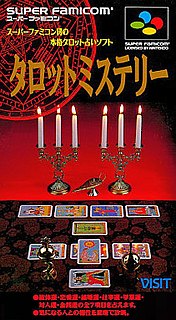
Tarot Mystery (タロットミステリー) is a Super Famicom title that revolves around tarot divination and answering questions in Japanese. This video game would become Yasuaki Fujita's final project as a composer for Super Famicom video games.

Ninja Combat is a 1990 side-scrolling beat 'em up video game developed by Alpha Denshi and published by SNK. It was one of the launch titles for both the Neo Geo MVS (arcade) and AES (home) systems. It is notorious for its unbalanced difficulty and odd design and gameplay ideas.

Natsuki Crisis Battle (なつきクライシスバトル) is a 1995 video game that was released exclusively for the Japanese Super Famicom. The player must choose between eight humanoid characters. Fights take place in a Japanese gym, outside the high school, and in other locations. There is a lot of heavy dialogue in the game and the animation is in anime/manga style. In fact, the video game itself is based on the two-episode OVA and manga Natsuki Crisis which was serialized in the magazine Business Jump.

Tactical Soccer is a Japan-exclusive soccer game released for the Super Famicom in 1995.
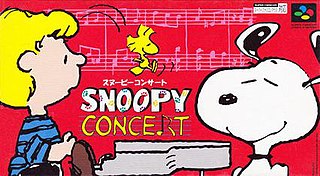
Snoopy Concert (スヌーピーコンサート) is a Japan-exclusive action video game based on the Peanuts cartoon characters Snoopy licensed from Peanuts and United Feature Syndicate, which was released for the Super Famicom in 1995. Some English-patched ROM-images has been released on the internet.

Nage Libre: Seijaku no Suishin is a 1995 Japan-exclusive video game for the Super Famicom.

Final Stretch (ファイナル・ストレッチ) is a 1993 Japan-exclusive Super Famicom Formula One racing video game licensed by FOCA to Fuji Television, which is based on the 1993 Formula One season.

After Burst (アフターバースト) is a Japan-exclusive action video game released for the Game Boy in 1990.

2nd Super Robot Wars (第2次スーパーロボット大戦) was the first game to be produced in the "Classic" canon timeline, the second game in the overall series, and the first game produced for the Famicom video game system on December 12, 1991.

Dragon Knight (ドラゴンナイト) is a fantasy-themed eroge role-playing video game and the original entry in the Dragon Knight franchise that was originally developed and published by ELF Corporation in 1989. Its remake was created by NEC Avenue in 1995. Both versions were released only in Japan. The game was adapted into an anime film in 1991 and was followed by Dragon Knight II in 1990.

